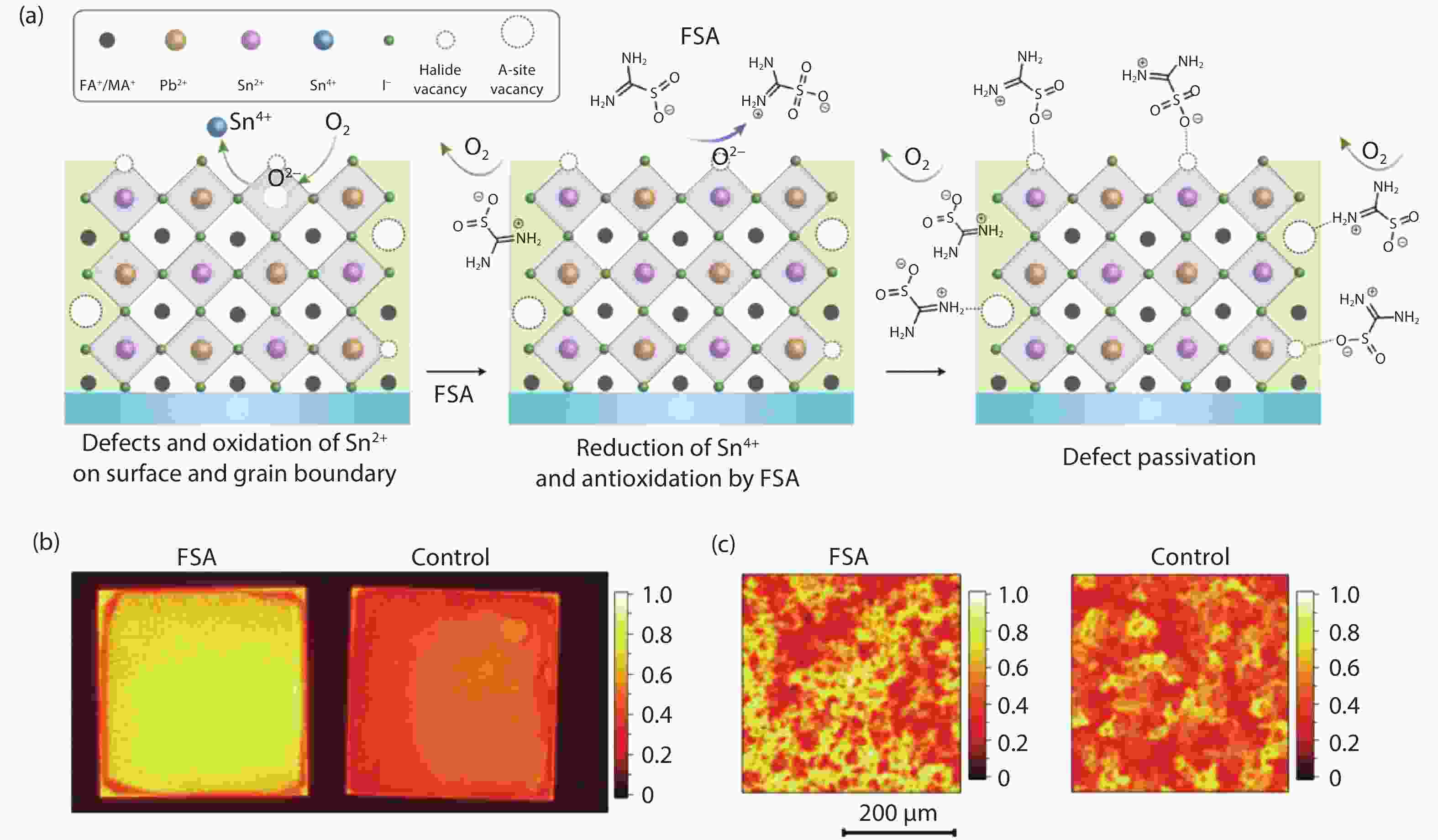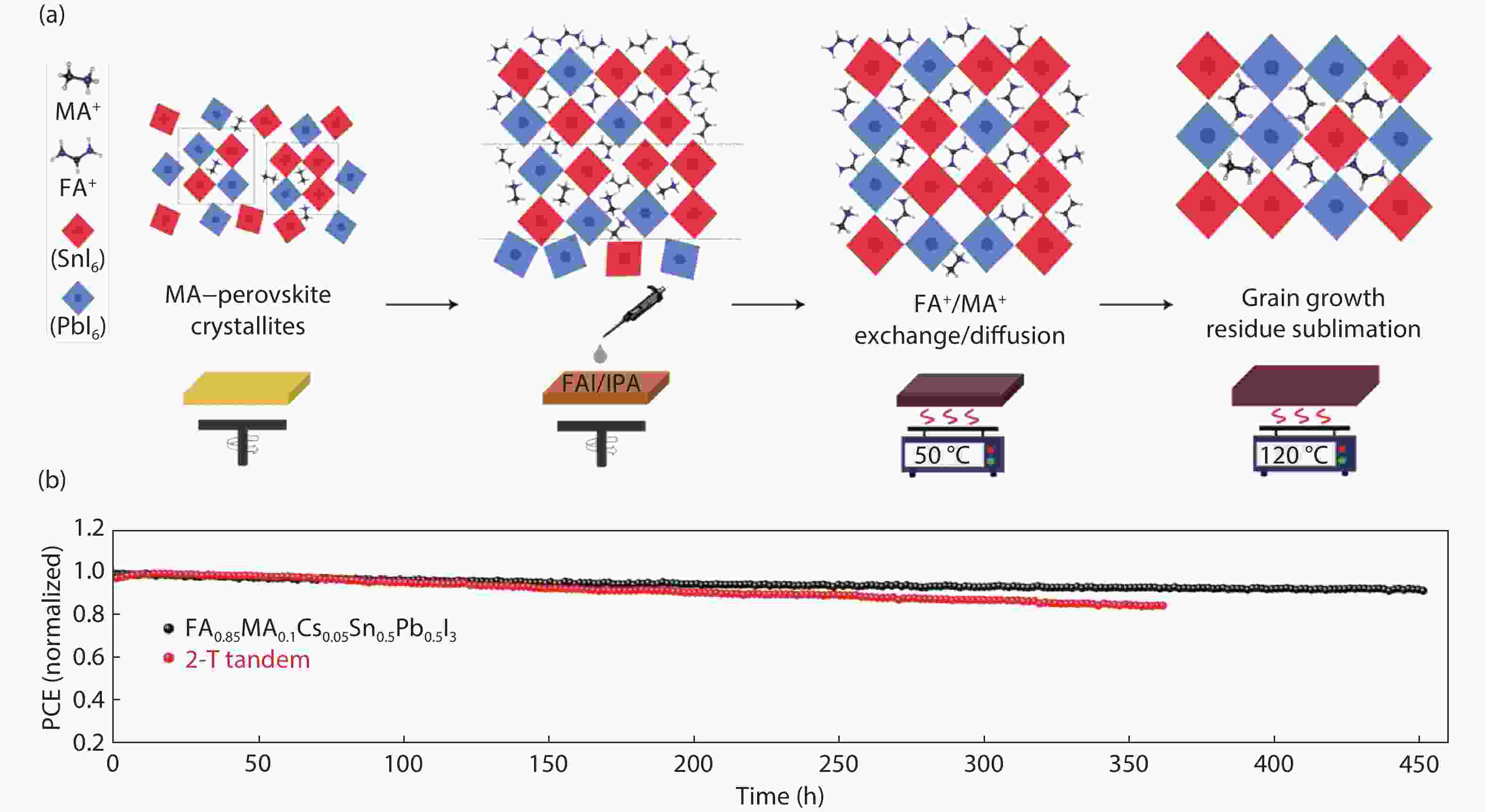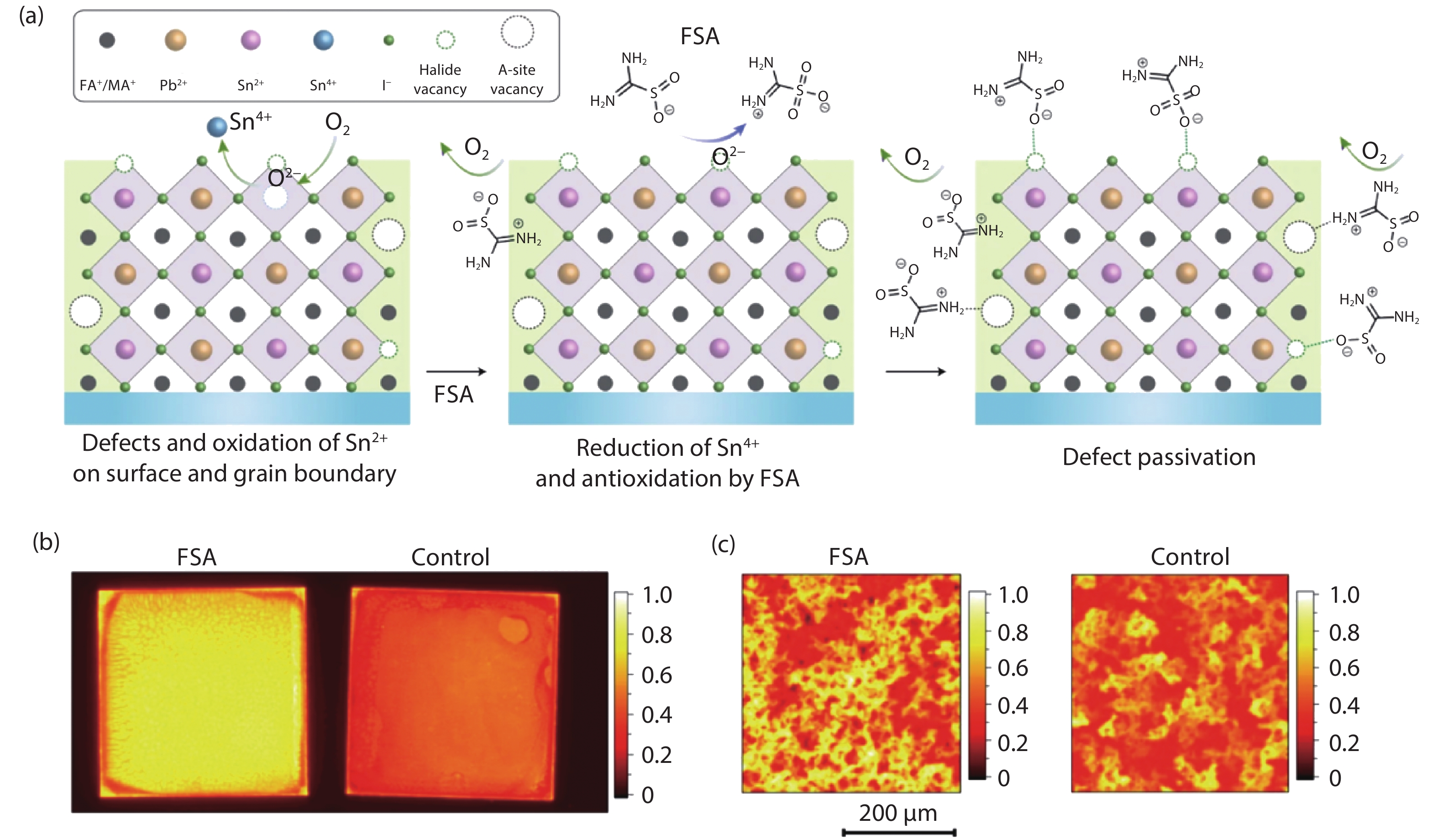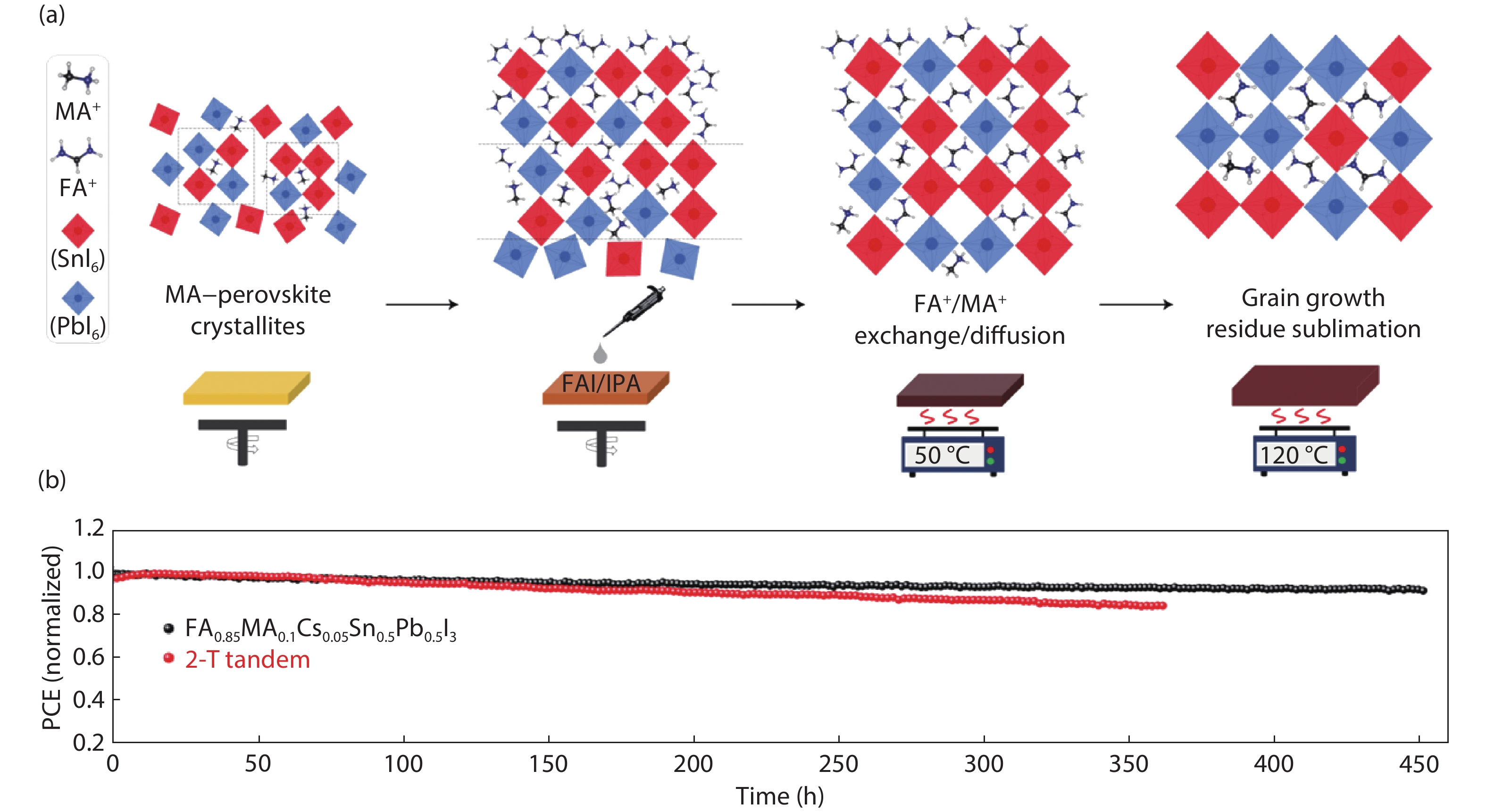| Citation: |
Rui He, Chuantian Zuo, Shengqiang Ren, Dewei Zhao, Liming Ding. Low-bandgap Sn–Pb perovskite solar cells[J]. Journal of Semiconductors, 2021, 42(6): 060202. doi: 10.1088/1674-4926/42/6/060202
R He, C T Zuo, S Q Ren, D W Zhao, L M Ding, Low-bandgap Sn–Pb perovskite solar cells[J]. J. Semicond., 2021, 42(6): 060202. doi: 10.1088/1674-4926/42/6/060202.
Export: BibTex EndNote
|
-
References
[1] Best research-cell efficiency chart. Available from: https://www.nrel.gov/pv/cell-efficiency.html[2] Shockley W, Queisser H J. Detailed balance limit of efficiency of p-n junction solar cells. J Appl Phys, 1961, 32, 510 doi: 10.1063/1.1736034[3] Kojima A, Teshima K, Shirai Y, et al. Organometal halide perovskites as visible-light sensitizers for photovoltaic cells. J Am Chem Soc, 2009, 131, 6050 doi: 10.1021/ja809598r[4] Eperon G E, Leijtens T, Bush K A, et al. Perovskite-perovskite tandem photovoltaics with optimized band gaps. Science, 2016, 354, 861 doi: 10.1126/science.aaf9717[5] Zhao D, Ding L. All-perovskite tandem structures shed light on thin-film photovoltaics. Sci Bull, 2020, 65, 1144 doi: 10.1016/j.scib.2020.04.013[6] He R, Chen T, Xuan Z, et al. Efficient wide-bandgap perovskite solar cells enabled by doping a bromine-rich molecule. Nanophotonics, 2021, in press doi: 10.1515/nanoph-2020-0634[7] Zhao D, Wang C, Song Z, et al. Four-terminal all-perovskite tandem solar cells achieving power conversion efficiencies exceeding 23%. ACS Energy Lett, 2018, 3, 305 doi: 10.1021/acsenergylett.7b01287[8] Tong J, Song Z, Kim D H, et al. Carrier lifetimes of > 1 μs in Sn-Pb perovskites enable efficient all-perovskite tandem solar cells. Science, 2019, 364, 475 doi: 10.1126/science.aav7911[9] Wan Z, Lai H, Ren S, et al. Interfacial engineering in lead-free tin-based perovskite solar cells. J Energy Chem, 2020, 57, 147 doi: 10.1016/j.jechem.2020.08.053[10] Wang C, Song Z, Li C, et al. Low-bandgap mixed tin-lead perovskites and their applications in all-perovskite tandem solar cells. Adv Funct Mater, 2019, 29, 1808801 doi: 10.1002/adfm.201808801[11] Zhao D, Yu Y, Wang C, et al. Low-bandgap mixed tin-lead iodide perovskite absorbers with long carrier lifetimes for all-perovskite tandem solar cells. Nat Energy, 2017, 2, 17018 doi: 10.1038/nenergy.2017.18[12] Zhao D, Chen C, Wang C, et al. Efficient two-terminal all-perovskite tandem solar cells enabled by high-quality low-bandgap absorber layers. Nat Energy, 2018, 3, 1093 doi: 10.1038/s41560-018-0278-x[13] Li C, Song Z, Zhao D, et al. Reducing saturation-current density to realize high-efficiency low-bandgap mixed tin-lead halide perovskite solar cells. Adv Energy Mater, 2019, 9, 1803135 doi: 10.1002/aenm.201803135[14] Lin R, Xiao K, Qin Z, et al. Monolithic all-perovskite tandem solar cells with 24.8% efficiency exploiting comproportionation to suppress Sn(II) oxidation in precursor ink. Nat Energy, 2019, 4, 864 doi: 10.1038/s41560-019-0466-3[15] Xiao K, Lin R, Han Q, et al. All-perovskite tandem solar cells with 24.2% certified efficiency and area over 1 cm2 using surface-anchoring zwitterionic antioxidant. Nat Energy, 2020, 5, 870 doi: 10.1038/s41560-020-00705-5[16] Li C, Song Z, Chen C, et al. Low-bandgap mixed tin-lead iodide perovskites with reduced methylammonium for simultaneous enhancement of solar cell efficiency and stability. Nat Energy, 2020, 5, 768 doi: 10.1038/s41560-020-00692-7[17] Savill K J, Ulatowski A M, Farrar M D, et al. Impact of tin fluoride additive on the properties of mixed tin-lead iodide perovskite semiconductors. Adv Funct Mater, 2020, 30, 2005594 doi: 10.1002/adfm.202005594[18] Ren A, Lai H, Hao X, et al. Efficient perovskite solar modules with minimized nonradiative recombination and local carrier transport losses. Joule, 2020, 4, 1263 doi: 10.1016/j.joule.2020.04.013 -
Proportional views






 DownLoad:
DownLoad:
















